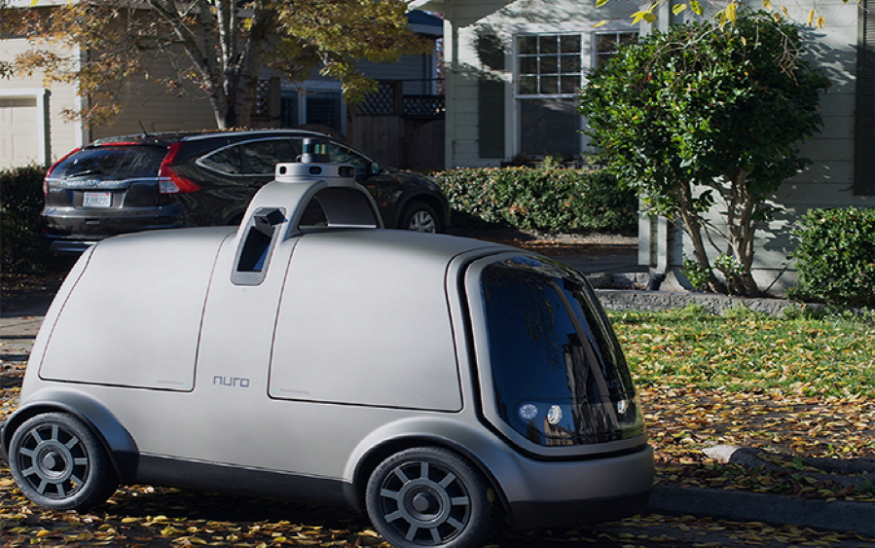Developing the Self-Delivering Package
A segment in need of distruption
Thomas Frey //April 15, 2018//


Developing the Self-Delivering Package
A segment in need of distruption
Thomas Frey //April 15, 2018//

Nuro is a driverless delivery startup in silicon valley
A couple years ago I was asked to keynote the 8th annual Turkish Postal Symposium on the future of the postal industry. There, thought leaders from around the world gathered to discuss next-generation postal systems.
I focused my talk around a central question:
“How long will it be before we can mail a package and have it travel to a city on the other side of the world without ever being touched by human hands?”
The example I used was a package traveling from Istanbul to San Francisco without human contact.
Thinking through the path of automation, this is a reasonable question. Once we set a package into motion, it will essentially guide itself to its final destination by way of a completely automated global distribution network.
MAIL IN 2030
As I envision the process, whoever is sending a package will simply place it on the front doorstep and take a photo of it with a special shipping application. This will start the process, detailing the size, dimensions and GPS coordinates, and the sender will add particulars such as destination, level of urgency and weight category. Within a short while, a robotic pickup service will arrive, retrieve the package and load it onto a drone delivery vehicle.
While the sender will know the price range at the time they put it into the app, they will get exact pricing once the package is picked up, along with tracking details and exact time of delivery.
Several pieces of such a distribution network are already in place, but as we dig deeper and try to understand what it will take to achieve this level of automation, we begin to uncover not only the technical elements that still need to be developed, but also the necessary system layers to develop global standards and compatibility.
Since packages come in a variety of shapes and sizes, it’s reasonable to assume limits on the size and the weight. As an example, a package the size of a grain of salt or as light as a helium balloon will need to be in a larger package. On the larger end of the spectrum, mailing items like furniture, exercise equipment, or motorcycles will require a different kind of delivery service.
In addition to size and weight issues, there will be a series of legal requirements for shipping restrictive items like alcohol, pharmaceuticals, live animals, biohazard materials, or products with special handling requirements, like fragile glass, frozen food or sensitive instruments.
Establishing limits, rules and standards will be part of the critical thinking process necessary for developing this future mega-system.
Today’s delivery systems place a heavy emphasis on using a standardized shipping label for every package, however the label itself could be produced by the delivery service and coded onto the package once it’s been picked up. In some cases, it may be beneficial to work with specialty sensor labels to track the condition of sensitive contents in real time.
THE PICKUP PROBLEM
Retrieving a package from someone’s front door presents a number of engineering challenges.
First, the robot will have to travel to and from where the package is. Obstacles could include stairs, trees, broken sidewalks, no sidewalk, dogs, cats, squirrels, snakes, rain, hail, snow, children, rocks, and mud to name just a few.
The package could be square, round or an odd shape that is hard to describe. The outer material of the package could be cardboard, paper, plastic, cloth, synthetic, loose, tight, waterproof, air tight, porous, full of static, oily, wood, or leather.
There could be fences, gates, security guards, locked doors, motion detectors, nosey neighbors, piles of leaves or overgrown lawns.
Timing is also an issue. A package left outside for two minutes will generally be fine, but one left exposed to the elements for 30 to 60 minutes could have any number of things go wrong.
For this reason, the relatively simple task of retrieving a package can be riddled with complexity.
A NEW KIND OF GLOBAL INFRASTRUCTURE
As an overarching trend, we are transitioning from national systems to global systems, and every piece of system-level infrastructure becomes an essential part of the overall network.
If we think of this growing into a worldwide distribution network, we begin to get a sense of how it could change the lives of virtually everyone on earth.
Many fully mechanized distribution centers already exist in Europe, Asia and North America, but this level of automation will require countries around the world to develop many additional layers of standards and compatibility.
With normal deliveries to a building, messages will also be sent when the package is delivered. Each building will have its own designated delivery area.
There is no miracle science needed to complete this kind of infrastructure, just plenty of engineering work and the political will and foresight to make it happen.
























